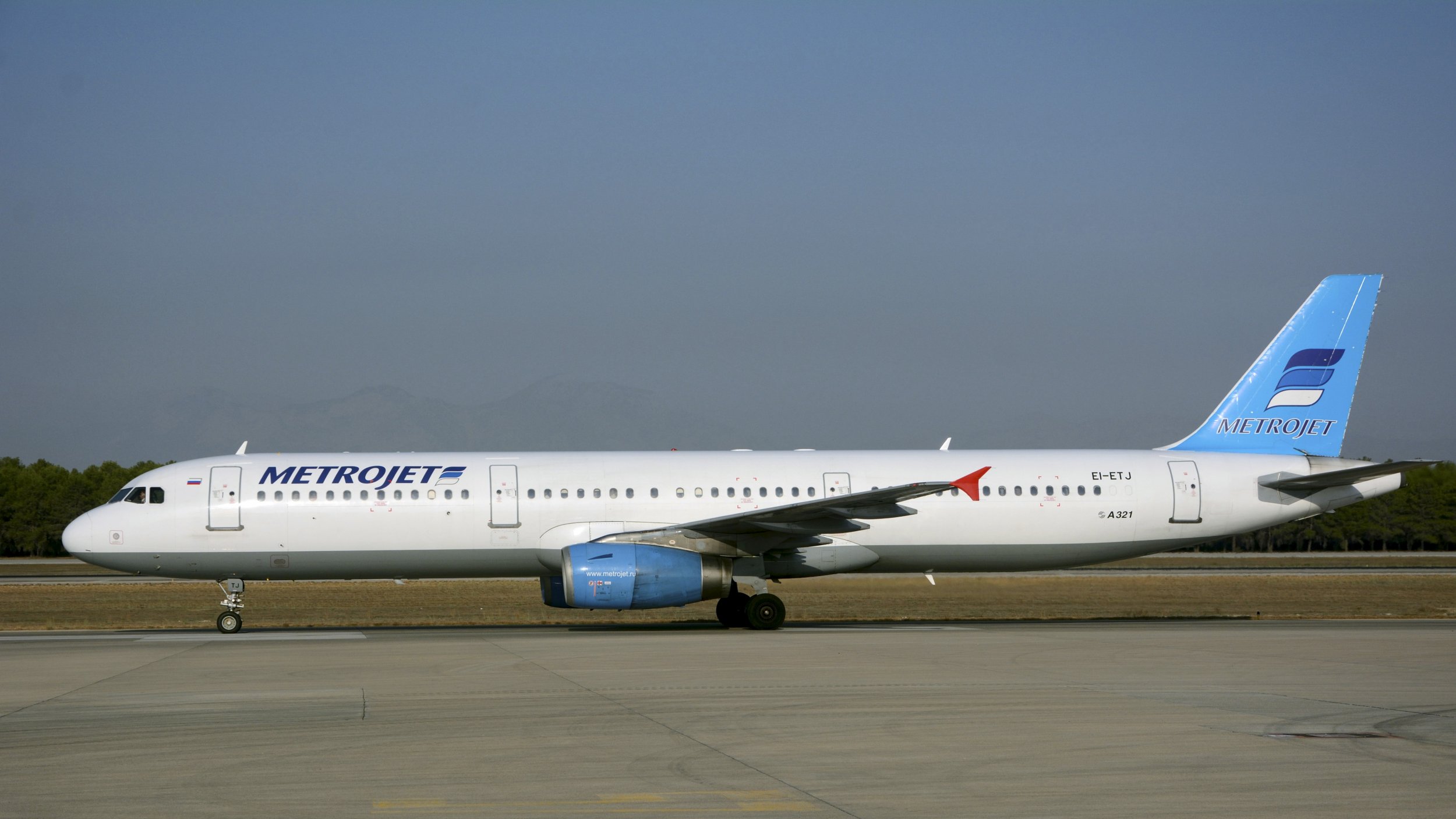
Updated | ISMAILIA, Egypt/CAIRO (Reuters) - None of 224 passengers and crew on board a Russian passenger plane that crashed in Egypt's Sinai peninsula on Saturday survived, medical and security sources said.
An initial examination of the crash site showed the plane crashed due to a technical fault, security sources in North Sinai said. Later, a militant group affiliated with Islamic State in Egypt claimed responsibility for its downing, the group said in a statement circulated by supporters on Twitter.
The claim of responsibility was also carried by the Aamaq website, which acts as a semi-official news agency for Islamic State.
"The fighters of the Islamic State were able to down a Russian plane over Sinai province that was carrying over 220 Russian crusaders. They were all killed, thanks be to God," the statement circulated on Twitter said.
The Airbus A321, operated by Russian airline Kogalymavia under the brand name Metrojet, was flying from the Sinai Red Sea resort of Sharm el-Sheikh to St Petersburg in Russia when it went down in a desolate mountainous area of central Sinai soon after daybreak, the aviation ministry said.
An authoritative Sweden-based aviation tracking service said the aircraft, having made an apparently smooth take off, lurched into a rapid descent shortly after approaching cruising altitude.
"I now see a tragic scene," an Egyptian security officer at the scene told Reuters by telephone. "A lot of dead on the ground and many who died whilst strapped to their seats.
"The plane split into two, a small part on the tail end that burned and a larger part that crashed into a rock. We have extracted at least 100 bodies and the rest are still inside," the officer, who requested anonymity, said.
Sinai is the scene of an insurgency by militants close to Islamic State, who have killed hundreds of Egyptian soldiers and police and have also attacked Western targets in recent months.
Russia, an ally of Syrian President Bashar al-Assad, launched air raids against opposition groups in Syria including Islamic State on September 30.
Civil Aviation Minister Mohamed Hossam Kemal was quoted in a cabinet statement as saying it was too soon to determine the cause of the crash. Security sources said there was no indication the Airbus had been shot down or blown up.
TELEPHONES RINGING
Egyptian Prime Minister Sherif Ismail was heading to the crash site in the Hassana area 35 km (22 miles) south of the Sinai Mediterranean coastal city of Al Arish with several cabinet ministers on a private jet, the tourism ministry said.
Russian television showed film of anxious relatives and friends waiting for information at St. Petersburg's Pulkovo airport. Russian President Vladimir Putin declared a day of national mourning for Sunday.
The A321 is a 185-seat medium-haul jet in service since 1994, with over 1,100 in operation worldwide and a good safety record. It is a highly automated aircraft relying on computers to help pilots stay within safe flying limits.
Saturday's crash is the second fatal accident involving this variant of the A320 jetliner family, according to data from the Flight Safety Foundation.
Airbus said it had no independent information on the crash and declined to comment on the aircraft involved.
Emergency services and aviation specialists quickly began an inspection of the wreckage for any patterns of damage that could point to the cause. One of two flight recorders was quickly found, but wreckage was scattered over a wide area.
The security officer said 120 intact bodies had been found.
"We are hearing a lot of telephones ringing, most likely belonging to the victims, and security forces are collecting them and putting them into a bag," he said.
The aircraft took off at 5:51 a.m. Cairo time (0351 GMT) and disappeared from radar screens 23 minutes later, Egypt's Civil Aviation Ministry said in a statement. It was at an altitude of 31,000 feet (9,400 meters) when it vanished from radar screens.
Accidents at cruising altitude are one of the rarest categories of accidents but also among the most deadly, accounting for 13 percent of fatal incidents but 27 percent of fatalities since 2005, according to Boeing.
According to FlightRadar24, an authoritative Sweden-based flight tracking service, the aircraft was descending rapidly at about 6,000 (2,000 meters) feet per minute before the signal was lost to air traffic control.
The Russian RIA news agency, citing sources at Sharm el-Sheikh, said: "The pilot contacted the dispatcher and reported technical problems, asking for a change of the route and a landing at Cairo airport, after which communication was broken."
The aircraft cited in tracking reports had two engines from the International Aero Engines consortium, which includes United Technologies unit Pratt & Whitney and Germany's MTU Aero Engines.
This article has been updated to include information about possible causes of the crash and sources saying all 224 people aboard the plane are dead.
Uncommon Knowledge
Newsweek is committed to challenging conventional wisdom and finding connections in the search for common ground.
Newsweek is committed to challenging conventional wisdom and finding connections in the search for common ground.
About the writer
To read how Newsweek uses AI as a newsroom tool, Click here.








